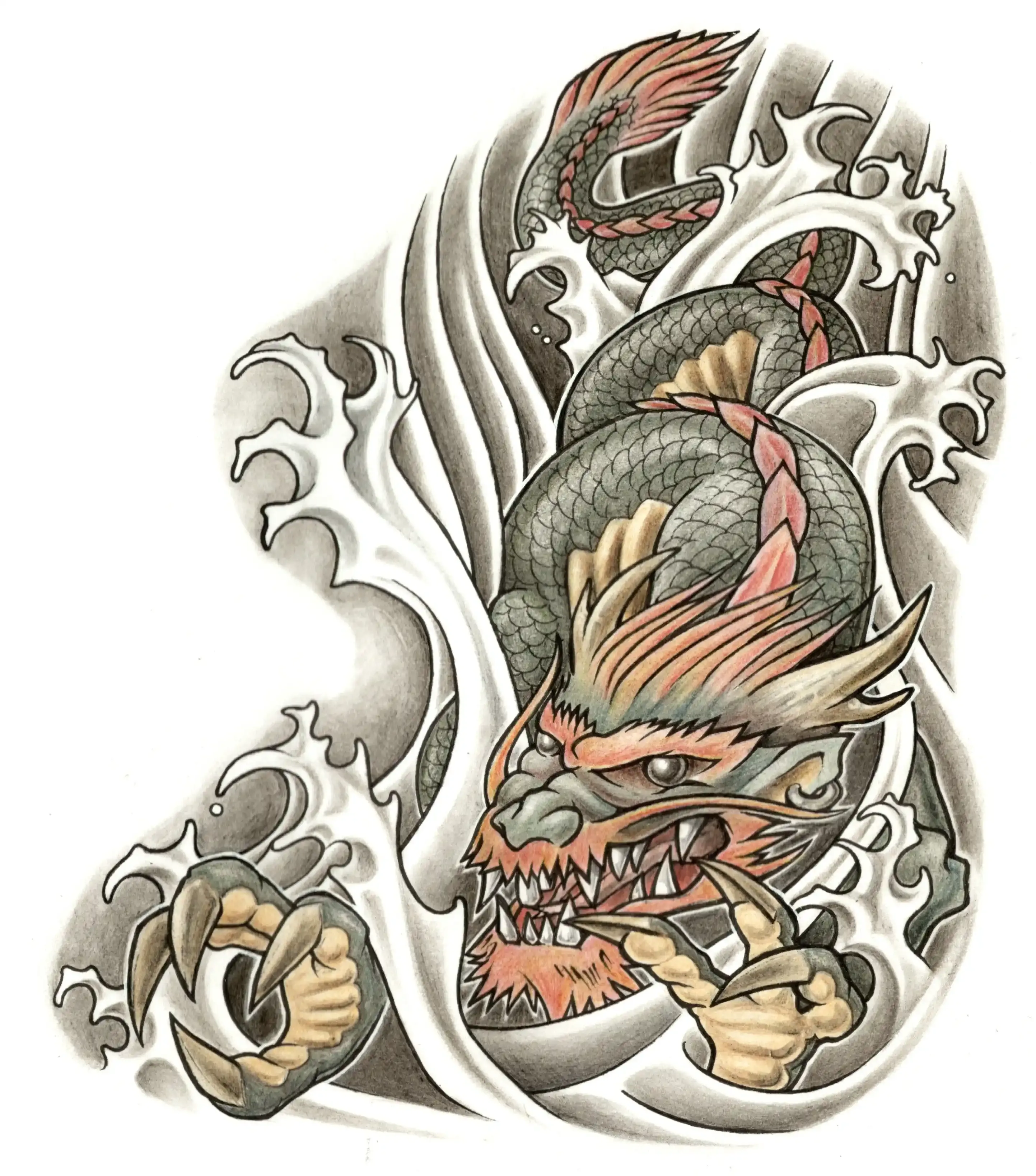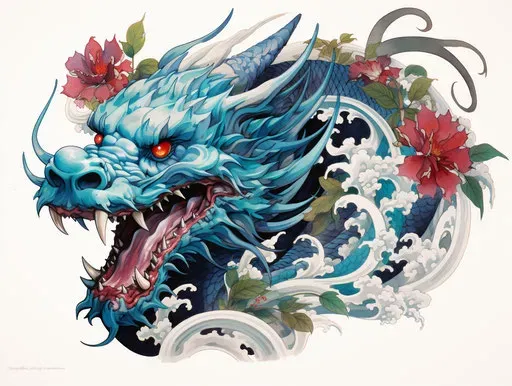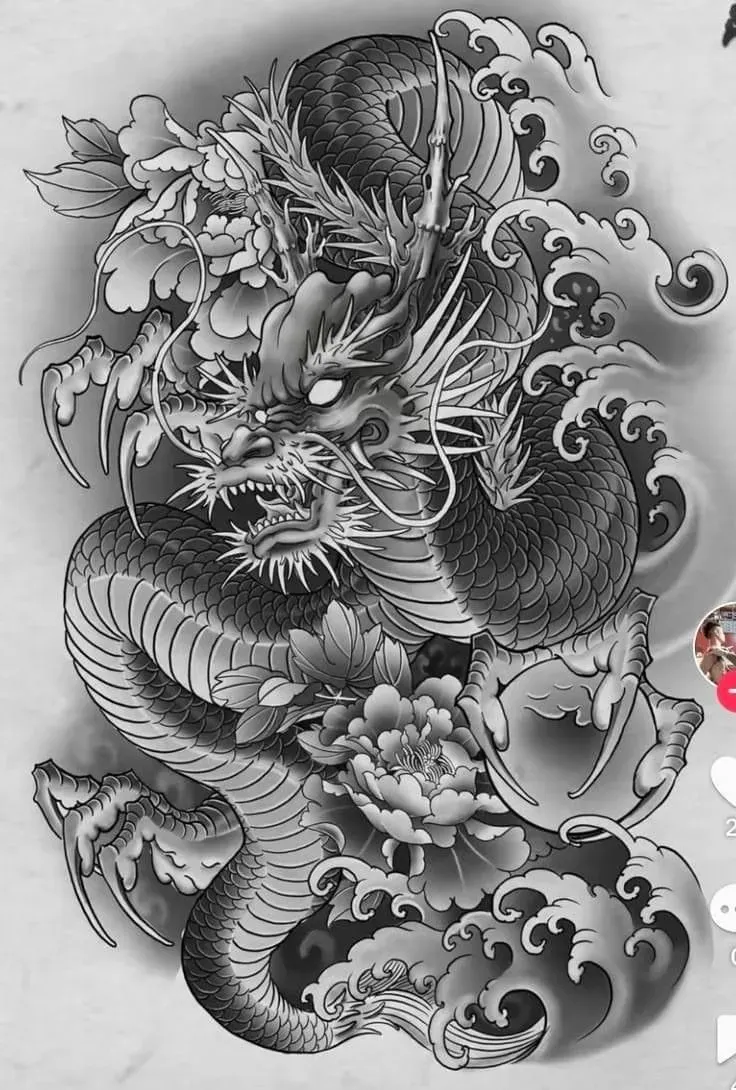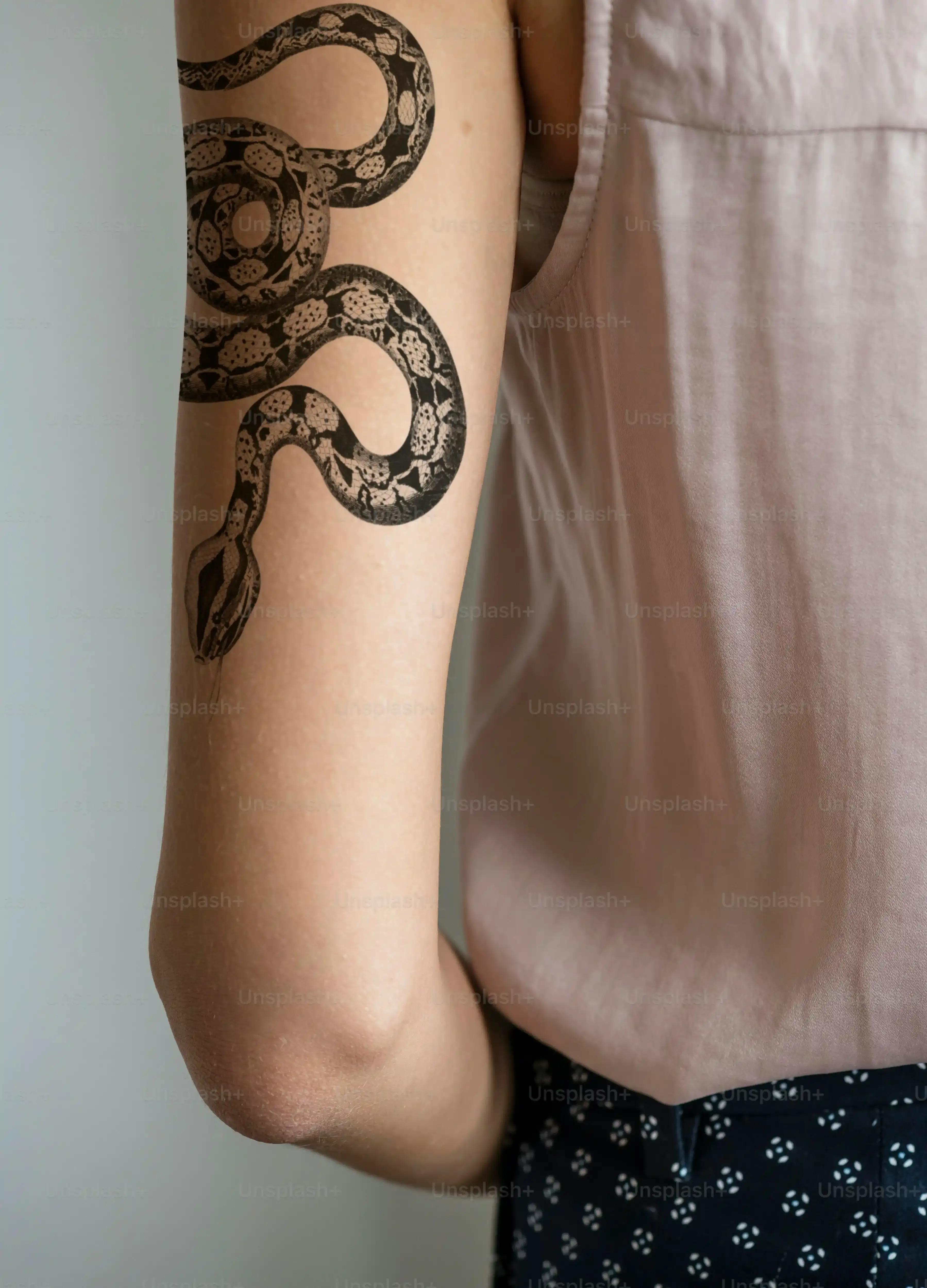Table of Contents
Walk into pretty much any serious tattoo shop, and you're bound to see them: swirling scales, fierce eyes, and powerful claws. Japanese dragon tattoo designs aren't just popular; they're iconic. They carry a weight of history and symbolism that goes way beyond just looking cool on your skin. But with so many styles and meanings wrapped up in these mythical beasts, figuring out where to start can feel like trying to catch smoke. Are you just getting a cool picture, or are you tapping into something ancient? This isn't about slapping on some flash art; it's about understanding the story you're putting on your body. We're going to cut through the fog and look at what these creatures represent, explore the different types of japanese dragon tattoo designs you might encounter, talk about where they actually look good on a human canvas, and walk you through the sometimes-painful process of getting one. By the end, you'll have a much clearer picture of whether a Japanese dragon is the right spirit animal for your ink collection and how to make sure you get a piece that stands the test of time.
What Japanese Dragon Tattoos Really Mean
What Japanese Dragon Tattoos Really Mean
So, you're looking at these incredible creatures on skin and wondering, " what's the big deal? What Japanese dragon tattoos really mean?" Forget everything you think you know from fantasy movies where dragons are just hoarders or monsters to be slain. In Japanese culture, dragons, or *ryu*, are powerful, yes, but they are overwhelmingly benevolent. They're associated with water, clouds, and the heavens, often seen as guardians and symbols of wisdom, strength, and good fortune. They control the rain, bring life, and can ascend to the sky or descend to the depths of the ocean. Getting one inked isn't just about showing off a cool design; it's about connecting with these ancient symbols of power, wisdom, and sometimes, a bit of chaos controlled.
Exploring Different Japanese Dragon Tattoo Designs
Exploring Different Japanese Dragon Tattoo Designs
Not All Dragons Are Created Equal
Alright, so you know these dragons are more than just angry lizards. But when you look at different japanese dragon tattoo designs, you'll notice they aren't all the same. There are variations, each with subtle differences in appearance and meaning. The *Ryu* is the most common, the classic four-clawed beast controlling water and weather. You might see the *Han-Ryu*, a hornless one that hasn't reached full maturity yet, or the *Kai-Ryu*, which is often depicted in vibrant red, smaller and said to live in the ocean. Then there's the *Ri-Ryu*, known for its incredible eyesight, or the *Fuku-Ryu*, the lucky dragon. Each type has specific traits, from the number of claws (usually three or four in Japan, unlike the five-clawed imperial Chinese dragon) to the presence or absence of horns or specific scales. A good artist will know the difference and help you pick the right one for the vibe you're going for.
Beyond the Dragon Itself: Adding Elements
It's rare to see a Japanese dragon tattoo design just floating in space. These pieces are often part of a larger scene, incorporating other traditional Japanese elements that add layers of meaning and visual flow. Think swirling clouds, symbolizing the dragon's domain and its ability to ascend. Waves are another classic, representing the dragon's connection to water and its power over it – sometimes calm, sometimes tempestuous. Cherry blossoms or peonies bring a touch of fleeting beauty or prosperity, often contrasting with the dragon's raw power. Sometimes you'll see thunder or lightning, reinforcing the dragon's control over storms. These aren't just random add-ons; they are carefully chosen symbols that complement the dragon and complete the narrative of the piece. It's like putting together a complex puzzle where every piece has a purpose.
- Ryu: The classic, four-clawed weather controller.
- Han-Ryu: The younger, hornless version.
- Kai-Ryu: Often red, smaller, ocean-dwelling.
- Ri-Ryu: Known for sharp vision.
- Fuku-Ryu: The bringer of good fortune.
Placement and Planning for Your Japanese Dragon Tattoo Designs
Placement and Planning for Your Japanese Dragon Tattoo Designs
Why Placement Isn't Just an Afterthought
you've picked your dragon type and maybe even thought about some elements like clouds or waves. Now comes the crucial part: where the heck does this thing go? Placement for japanese dragon tattoo designs isn't just about finding an empty spot on your body. These are dynamic designs, often long and flowing, meant to wrap around limbs or spread across large areas like backs or chests. A good placement enhances the movement of the dragon. Think about how the scales will look as your arm bends, or how the body coils across your shoulder blade. Putting a long, slender dragon design on a small, flat area just looks awkward, like trying to fit a noodle into a thimble. The body's anatomy should work *with* the design, not against it. This isn't a bumper sticker; it's a piece of art that lives and moves with you.
Popular Spots and What Works
Certain areas lend themselves beautifully to japanese dragon tattoo designs because of the space and natural flow they offer. The back is a classic for a reason – it's a large, flat canvas perfect for a sweeping, full-bodied dragon or even a scene with multiple elements. Sleeves, full or half, are also popular, allowing the dragon to coil around the arm, using the muscle structure to give it dimension. Legs, especially the thigh or calf, offer similar opportunities for wrapping designs. The chest and shoulder area can work well, often incorporating the pectoral muscles or flowing onto the arm. Less common but still viable spots include the ribs or even wrapping around the torso, though these are often more complex and can be, shall we say, less comfortable during the process. The key is finding a spot that allows the design to breathe and move naturally.
Where do most people put these things?
- Full Back: The ultimate canvas for a detailed, sprawling dragon.
- Sleeves (Arm or Leg): Perfect for designs that wrap and flow with movement.
- Chest/Shoulder: Allows the dragon to sit prominently and flow onto the arm.
- Ribs/Torso: More challenging, but can create a dramatic, large-scale piece.
Planning the Scale and Finding Your Artist
Once you have a general idea of placement, you need to think about scale. Japanese dragon tattoo designs are typically large. Trying to cram a complex dragon with detailed scales and elements into a tiny spot just turns it into an unreadable blob over time. Be realistic about the size needed to do the design justice. This is also when you absolutely need to find an artist specializing in traditional Japanese tattooing, or *Irezumi*. They understand the history, the symbolism, the flow, and the techniques required for these intricate pieces. Don't walk into a street shop known for flash tattoos and ask for a full back dragon. Look at portfolios, check healed work, and have a consultation. A good artist will help you refine your ideas, suggest placement based on their expertise, and ensure the design will age well. They are your guide through this process, and choosing the right one is as important as choosing the design itself.
The Process: Getting Your Japanese Dragon Tattoo
The Process: Getting Your Japanese Dragon Tattoo
so you've done your homework, found your artist, and you're ready to commit. Now comes The Process: Getting Your Japanese Dragon Tattoo. This isn't a quick trip to the tattoo parlor for a tiny butterfly. These pieces take time. A lot of time. We're talking multiple sessions, often spread out over weeks or months, especially for larger pieces like sleeves or back pieces. Each session can last several hours, and yes, it's going to hurt. Anyone who tells you otherwise is lying or has a weird pain tolerance. It's a commitment, not just financially, but in terms of your time, your pain threshold, and the healing process afterward. Be prepared for the long haul, follow your artist's aftercare instructions religiously, and understand that the final result is the culmination of their skill and your endurance.
More Than Just Ink: Living with Your Dragon
So, you've navigated the complex world of Japanese dragon tattoo designs, from deciphering their ancient meanings to picking a style and finding a spot that makes sense on your body. You've considered the commitment – both in time and pain – that goes into acquiring such a piece. A Japanese dragon isn't a spur-of-the-moment decision; it's a significant investment of skin real estate and personal meaning. It's a piece of art that breathes with history, but also a constant reminder etched onto your body. Take the time, find an artist who knows their stuff, and understand what you're getting into. Because once that ink is laid, that dragon is with you for the long haul, a silent partner in your journey.